The Keys to Sustainable Pet Ownership


By Jessica Varley
Pets outnumber people in many countries. Despite our own increasing carbon footprint, the paws, wings and claws of our house animals also contribute to the matter.
It’s not as simple as owning a smaller animal, which will demand fewer resources. Pet owners have a responsibility to ensure that they’re minimizing the environmental impact of their animals by undertaking some sustainable measures. In a perfect world, how can we project a sustainable future for the pet industry?
Food matters
Managing the consumption of your pet may not be an obvious element to consider. However, understanding what your pet really eats is key. Historically, the pet industry accrued big profits with the lucrative manufacturing of horse meat, which was tinned and labeled specifically for dogs after World War I.
Typical Western consumption of food is considered unsustainable, specifically with increasing wastage of food. This could be offset with uneaten meat or poultry parts repurposed for our pets. For example, raw bones are a great source of nutrients for cats and dogs, and they cost next to nothing from your local butcher. Also, ensuring that your pets are not ingesting any preservatives and additives will help keep them healthy and may reduce vet visits.
Another matter to be concerned about is the recent surge and demand for ‘human-grade’ pet food. This movement aims to meet nutritional standards for our furry friends, but unfortunately there is a lot of wastage involved. Traditionally we adopted a ‘top to tail’ way of eating, in which people consumed all parts of the animal, a practice that has sadly remained in the past.
If we’re feeding our pets exactly the same cuts we enjoy, we are continuing to steer away from a sustainable consumption of animals.
With more pets than humans on our planet and an increasing awareness for optimal pet nutrition, the demand for ‘human-grade’ pet food has a potential to run into trouble.
Ensuring our pets receive optimal nutrition is key, but this could be achieved with a more sustainable approach such as feeding pets perhaps “unwanted” cuts of animals.
Optimal hygiene
We may be impervious to our own waste, which is efficiently filtered through our toilet systems, but we also have to look after our pets' waste and dispose of it responsibly.
If your pet’s waste is not collected using a biodegradable bag, you can expect it to sit in wasteland for many years without decomposing. Or worse, it could end up in our waterways.
An American study conducted in 2014 found that waterways are subject to many sources of fecal contaminants, which can include those from our beloved pets: Animals can carry antibiotic-resistant strains of E.Coli.
Turning a blind eye on your pet’s businesses is irresponsible on many moral levels, but understanding how it can impact us directly should be even more motivation to pick up after them.
Defying natural habits
Another big issue pet owners must be wary of is the primal nature of their animals. For example, cats will hunt native or wild animals and most likely leave them deceased on your front doorstep as offerings.
Managing the native animal population is crucial for your natural environment. You can mitigate impact by applying a bell to your cat or dog’s collar to warn potential prey. Or us pet accessories like a cat bib, which help to interfere with an attack.
Another issue to be wary of is the rate of feral, abandoned or wild animals and the close contact they may have with your pet. These animals unfortunately can be carriers of disease, ticks and fleas which should be avoided to help protect the health of your pet.
Additionally, it is always wise to de-sex your pet at birth to prevent the potential for any cross-breeding with feral animals, let alone other pets. The rate of pets that are sent to the “farm” because they don’t have a home is an increasing issue that can be mitigated with responsible pet-parenting.
We may be outnumbered by our furry, scaly, feathery friends, but knowing how to manage their carbon footprint and minimize their impact will put household pets on a path to a sustainable future. Change must also come from industry itself with the manufacturing of high-quality pet food without the waste, development of natural products and education for pet owners.
Image via Unsplash
Jessica Varley works in customer service at Pet Circle.
The Garden Project Grows Plants (and People)
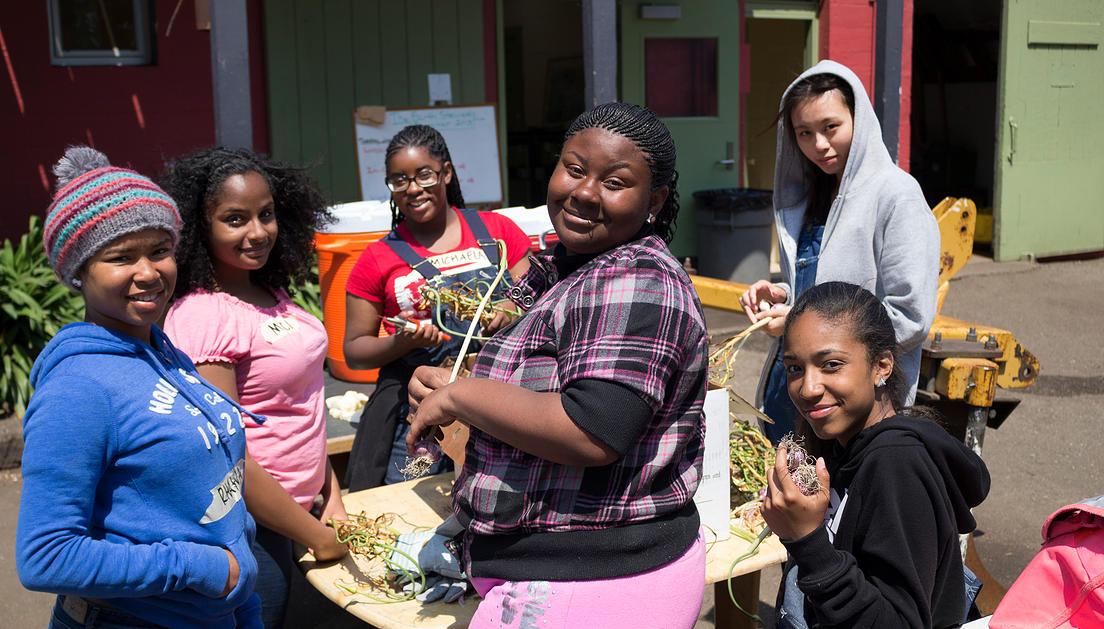

The Garden Project doesn’t just grow plants; it grows people too. By training and employing ex-offenders and at-risk youth, the project's mission is to use agriculture to transform low-income, urban communities that are disproportionately affected by crime.
At age 17 and pregnant, the founder of the Garden Project, Catherine Sneed, ran away from home, hitchhiking from New York to California, determined to become a lawyer. It was her professional ambition since the age of 9. “I thought if my brothers ever ended up in jail, I could help get them out,” she said. Even back then, Sneed was aware of the significant social dangers that black men faced, including getting caught up in the criminal justice system.
Once in law school, she planned to become a criminal lawyer and worked several felony cases in the public defender’s office. However, after the third loss in one of those cases, her notion of what it meant to be a criminal lawyer changed. “I realized that my dream of being a criminal lawyer wasn’t based on reality but rather on this romantic notion that lawyers had a magic wand to get people out of jail.”
So, she shifted gears in school, studied prison law and landed a job at the sheriff’s office in 1980. Sneed described what she saw there as “horrific.” “The women were unskilled, uneducated, with numerous children. Many of them were addicted to different drugs, mainly heroin in those days. And they were very much like me.”
Then a 23-year-old mother, she recognized what made her different: She was brought up in a household that emphasized the importance of education and working. The troubled men and women she met at the sheriff’s office didn’t have that background and had few resources to boot. One day, her boss gifted her a copy of “The Grapes of Wrath,” and suddenly it all clicked for her. “When people can connect to land, then somehow they have hope.”
Sneed asked the sheriff if she could bring the prisoners to work in the farm outside the jail. He said that she could, and immediately she saw a change in the inmates. “In the jail, they were argumentative; they wanted cigarettes; they were fighting,” she said. But in the fields, they could take the time to look around and learn about the world around them.
So, in 1982, Sneed founded the San Francisco County Jail Horticulture Project for prisoner rehabilitation. But she noticed that even as the inmates became more cooperative, they still had trouble getting jobs after leaving the prison. She also noticed the same inmates, over and over again. Many of them were happy to return to the Horticulture Program, where they felt they had a community, support and a purpose.
Sneed recalls asking one of the prisoners why he kept getting in trouble and coming back to jail – and he simply said that on the outside he had nothing. He was poor, uneducated and he couldn’t find a job. At the farm, he grew beautiful plants and flowers; he cared for the animals; and he could help people though his work.
It became clear to her that she needed to work on the factors that led to incarceration and on to recidivism. This led her to create the Garden Project. From conception, the project employed ex-offenders, who were paid by the city to landscape public-works sites and grow vegetables for the community. The program offered structure and support to former offenders through job training, support for continuing education, and counseling.
The Garden Project became a place where at-risk youth and former criminal offenders could learn horticultural skills and grow organic vegetables that feed seniors and families in their community. It was a community-based response to crime, unemployment and underemployment, that linked the stewardship of the environment to the stewardship of the community.
The Garden Project’s Earth Stewards Program combines life skills, counseling and environmental education with a paid job protecting natural resources, including the Hetch Hetchy Reservoir in Yosemite National Park, which supplies drinking water for 2.5 million people in the San Francisco Bay Area, and the Crystal Springs Reservoir in San Mateo County.
The project distributes vegetables grown by stewards to local community agencies, including Project Open Hand, which each serves hundreds of individuals weekly. Rather than purchasing food or relying on local supermarkets, which often donate only their unsalable items, the Garden Project is able to provide local San Francisco agencies with fresh food from the farm.
The United States Department of Agriculture hailed the Garden Project as “one of the most innovative and successful community-based crime prevention programs in the country.” Through meetings, fairs and community projects, the Garden Project works to connect local governments with the communities they serve – improving relationships and bringing more citizens into active civic life.
In addition to gaining a greater appreciation for the natural world, through environmentally-based projects, participants learn discipline, responsibility, communication skills and leadership. Working on long- and short-term projects in a variety of settings, the program challenges participants toward self-growth and provides important life lessons. They gain support for their educational and life goals through the program’s positive environment.
Image credits: The Garden Project
Celebrity Vegan Chef Leslie Durso Shares Her Keys to Success


Never before has eating your veggies looked so good. Actress, vegan chef and eco-lifestylist, Leslie Durso, refuses to compromise style for sustainability. America’s “Veggie Dreamgirl” shares her farm-to-stylish-table recipes, warmhearted sensibilities, and passion for fresh whole foods daily via her website and live appearances on the Food Network, the Discovery Channel, CNN and more.
A practicing vegetarian since 8 years old, the Southern California native attributes her early passion for cooking to growing up in a huge meat-eating Italian household. What turned out to be quite the unpopular decision as far as her family was concerned landed Durso in the kitchen at a very young age, where she learned to prepare meals for herself and pretty soon her whole family.
As she grew up, Durso leveraged her bright, sunshiny personality to break into the acting and modeling worlds. It wasn’t until she was invited to appear on the popular children’s television program, “Bill Nye the Science Guy,” that she discovered her deep-rooted passion for education. This experience sparked her lifelong journey to inspire healthy living habits across the country and around the world.
After establishing herself as a private chef for the New York and Hollywood elite, Dursoemerged as a public persona, hosting cooking segments on television and producing healthy living content online. Determined to inspire beneficial life-long eating habits for everyone, she manages to evangelize the benefits of a mindful lifestyle, with a charming girl-next-door relatability.
When asked about her key to success, Durso responded simply: “Love. Love what you do and who you are every single day, and you will find joy in everything.” Through her multimedia engagement and numerous upcoming initiatives, Durso plans to spread the love of a plant-based lifestyle to an even broader swath of fans, including mainstream omnivores and fellow millennials.
However, establishing herself a leading foodpreneur, healthy living educator and eco-lifestylist is not without its challenges. “In this business, there are so many temptations to be what 'they' are looking for. I think the biggest challenge is to maintain your sense of self and stick to the message and brand that you want to deliver,” Durso explained.
She also offered a piece of advice for emerging entrepreneurs who are working in a similar space: “Find your niche. Find what sets you apart from everyone else who is working in your space. And, most of all, follow your passion!”
As far as sustainability is concerned, it plays a huge part in Durso’s work. “Living a plant-based life is the greatest part you can play in helping save the environment. You can help reduce global warming, reduce methane production, save water, reduce your ecological footprint and so much more!”
When asked if she has any tips for reducing food waste, Durso responded: “If you buy it, eat it. Some of my favorite recipes have come from putting all the random ingredients left in my fridge on the counter and coming up with something wild and crazy. I am also big fan of reinventing leftovers. If you follow me on Instagram (@lesliedurso), you will see me reinventing dinner from the night before into something delicious for breakfast or lunch.”
Durso will share some of her favorite recipes and eco-lifestyle tips at the upcoming Green Festival in San Francisco, Nov. 13-15. The Green Festival is America’s largest and longest-running sustainability and green living event. It brings together the world’s most trusted companies, innovative brands, national and local businesses, pioneering thinkers, and conscious consumers in one place to promote the best in sustainability and green living.
“I love doing the Green Festivals!” Durso exclaimed. "I attended a festival in LA after being the guest judge on the all-vegan episode of Food Network’s 'Cupcake Wars' (the winner got a display at the festival). I fell in love with the people who run the event and with the people who attend.”
When asked about how the Green Festival is different from other expos or events, she responded: “Attendees of the Green Festival are my kind of people. They are looking for knowledge and inspiration. I love that! I love people with a passion to think beyond themselves and make the world a better place. Of course, I hope I can inspire them to add more veggies to their diets!”
As far as her vision for the future, Durso would love to have her own cooking show. “It is the perfect time for a plant-based cooking show to be introduced to mainstream audiences.” And as for the world, she would like to see people appreciate the planet and treat it with a bit more love and respect.
Durso is currently looking forward to filming episodes of "The Doctors" on CBS and embarking on a digital campaign for Dole Foods. To learn more about Leslie, be sure to follow her on Twitter or check out her website for inspiring eco-tips and vegan recipes.
Images courtesy of Leslie Durso
Israeli Restaurant Encourages Arab Muslims and Jews to Share Bread


An Israeli shopkeeper has come up with an innovative way to inspire world peace -- or at least create dialogue within his tiny country: offer a enticing discount for Arab and Jewish patrons who will break bread together.
Kobi Tzafrir, who owns a hummus bar in the northern Israeli town of Kfar Vitkin, a fairly short drive from the Palestinian-run West Bank, offers a 50 percent discount to Jews and Arabs who will agree to eat together at the same table.
Posted in Hebrew, Tzafrir notes that what he offers is not just a cultural blend of the quintessential Israeli fare ("Arab hummus" and "Jewish falafel"), but a reminder of the ambiance that once was common in many Israeli restaurants.
And his idea seems to be working. According to Al Jazeera, many mixed tables have already offered to pay the full price to show their support for the idea. The restaurant draws Palestinians from the other side of the border, as well as residents from the historic Jewish enclave, which has existed as a community since the 1930s. It's apparently a hit with tourists from Japan as well, who are eager to experience the true Mideast ambiance.
“If there’s anything that can bring together these peoples, it’s hummus,” Tzafrir told the Times of Israel. It's true: Few things seem to mend old hurts better than a dish that shares a common history.
In fact, the idea got me thinking: Could it work here? Are there communities or viewpoints where a common sharing of bread could enhance dialogue and in, so doing, promote commerce together? Could shared meals help Democrats and Republicans find common ground as they gear up for the 2016 elections? What about oil and gas industrialists and renewable energy proponents? Climate change activists and global warming skeptics? No matter how entrenched our issues seem at times, we all have our yearning for common terms ... and common goals, it would seem, since Tzafrir's hummus bar is benefiting from the concept's success.
“Scared of Arabs? Scared of Jews? By us, we don’t have Arabs! But we also don’t have Jews… By us, we’ve got human beings!"
And it's a great way to build business, as well as bridges.
Images: 1) Hummus - Steve Snodgrass 2) Kfar Vitkin - Ori~
Subway To Phase Out Antibiotics
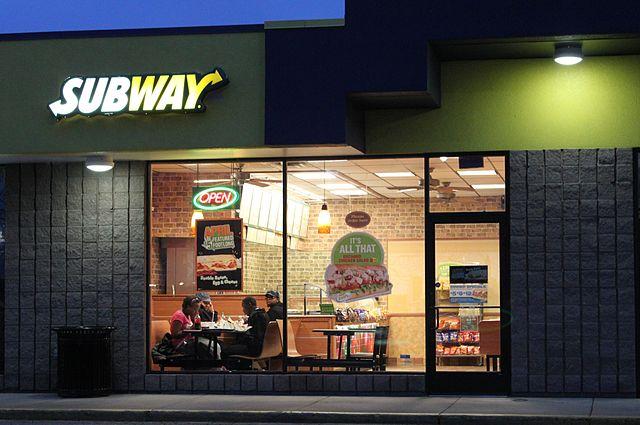

Another fast-food chain will phase antibiotics out of its meat supply chain. This time, the announcement came from Subway.
Not too long ago, Subway announced it would transition its chicken supply chain to one that does not use antibiotics important to human health. But now the fast-food chain is transitioning its entire U.S. meat supply chain to make it antibiotic-free by 2025.
Subway will phase out the use of antibiotics in stages. First, will come chicken. By 2016, all meat served in American Subway restaurants will be antibiotic-free. Next, will come turkey. In 2016, the chain will introduce antibiotic-free turkey, but it will take up to three years to completely transition, the company said. Pork and beef will be the last and will not be fully antibiotic-free until 2025.
Why is it taking so long? Dennis Clabby, executive vice president of Subway’s Independent Purchasing Cooperative (IPC), said in a statement that “a change like this will take some time, particularly since the supply of beef raised without antibiotics in the U.S. is extremely limited and cattle take significantly longer to raise.” In other words, it can’t happen overnight.
That it is happening at all is testament to the fact that bad press can sometimes spur a company to do the right thing. A report by a coalition of environmental and food advocacy groups, released last month, rated different fast-food chains. Subway received a failing grade (31 percent). The report noted that Subway didn’t even respond to a survey sent to the chain. The company also didn’t respond to attempts to clarify its position.
The Natural Resources Defense Council, one of the groups that participated in the report, has been pressuring Subway to take action on antibiotics. NRDC launched a campaign in August when it commissioned a full-size billboard near Subway’s corporate offices “challenging antibiotic use in its supply chain,” an NRDC blog post said.
Clearly, the billboard got to Subway. The NRDC blog post notes that, a few days after the billboard launched, the company updated the antibiotic use policy on its website. Then came the announcement about phasing out antibiotics from its chicken supply chain, and, most recently, phasing them out from its entire meat chain.
NRDC is not the only organization that targeted Subway with a campaign, as other groups also did, including Friends of the Earth. The message to the company was quite clear: Take action about antibiotics. Subway evidently received the message and decided to take action.
Coincidently, Lena Brook from NRDC was ready to deliver a petition with almost 300,000 signatures to Subway’s leadership at its Connecticut headquarters. On her way out the door, she saw the news about Subway’s announcement, she wrote on NRDC's Switchboard blog. Brook pointed out that Subway’s commitment to completely phasing out antibiotics from its supply chain puts it “on track to join an elite group of food industry giants.”
Indeed, Subway has joined a group of fast-food chains that have committed to phasing out antibiotics, including Chick-fil-A and McDonald's. That’s a long way to go in such a short time. The coalition that scored fast-food chains on antibiotics intends for its reports to be annual. Perhaps next year Subway will receive a much higher grade given its recent announcement.
And that matters because antibiotic resistance is real. Experts, including the World Health Organization, cite the routine use of antibiotics among livestock as contributing to antibiotic resistance. Fast-food chains can lead the way in phasing out antibiotic use among livestock, which will reduce antibiotic resistance. It’s a proverbial win-win situation.
Image credit: Flickr/Dwight Burdette
How Can Public-Private Partnerships Achieve Sustainable Change?
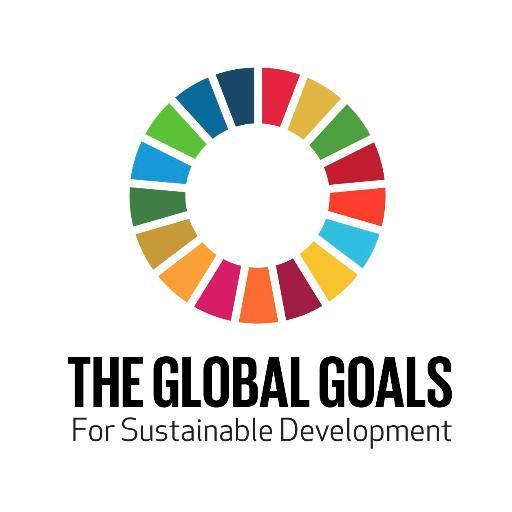

By Dr. Myriam Sidibe
We've just witnessed the member countries of the U.N. agree to 17 Global Goals that will, all going well, transform our world by 2030. These Sustainable Development Goals (SDGs) have three ambitious aims over the next 15 years: end extreme poverty; fight inequality and injustice; and fix climate change. They will replace the Millennium Development Goals and will be measured by 169 indicators. The hope is that these goals and indicators will frame national policies and agendas, starting now.
This is an exciting moment in history, when positive change in the lives of millions of people around our world could at last be in our grasp.
So, the next question is: How? How do we translate these goals into practical action? The idea of public-private partnerships (PPPs) is not a new one, but they could not be more relevant now. No one individual, organization or government is able to tackle the SDGs. But effective partnerships can. Working together, governments, NGOs and the private sector can pioneer the kind of innovative, sustained and, most importantly, practical initiatives that can end extreme poverty or fight inequality. They can, for example, combine to raise awareness of what good hygiene and good nutrition mean, and encourage new habits that deliver them.
My company, Unilever, works with many partners to address issues like hygiene and nutrition (which are intrinsically linked) at scale. For example, 6.3 million children around the world still die before they reach the age of 5, and sub-Saharan Africa takes the greatest burden of this, accounting for over 3 million of these deaths. Sadly, many become victims of preventable illnesses such as pneumonia or diarrhea, and almost half the deaths are linked to malnutrition.
How does a public-private partnership work in practice to deliver on the SDG ambitions? Take Nigeria, for example, and the issue of malnutrition. Unilever’s brand Knorr has committed to help reduce the prevalence of iron deficiency anaemia, by making nutritious cooking more desirable, easy to understand and afford.
Knorr has set up an inclusive business model, “Gbemiga,” with several partners, such as the Global Alliance for Improved Nutrition (GAIN) and the Growing Business Foundation and Society for Family Health (SFH). By working together, they are able to improve living standards by training women to sell nutritious products and simultaneously reinforce the dietary changes that can help reduce the prevalence of iron deficiency in families across the country -- and Unilever has successfully fortified its bouillon cubes with Iron.
Another example is the practice of handwashing with soap. Both pneumonia and diarrhea (and the deaths they cause) can largely be prevented by this simple hygiene routine. This is where another of Unilever’s brands, Lifebuoy, can have a real impact ensuring that we make soap available, accessible and affordable and embedding habit-building into our marketing strategies.
By working with NGOs and governments to embed these practices into health and education systems, we are able to reach more mothers and save more newborn lives. Lifebuoy has recently renewed its partnership with USAID, expanding its hygiene education program to reach pregnant women and new mothers across Kenya.
The combination of Lifebuoy’s behavior-change expertise and USAID’s ability to deploy programs at scale, in the areas where help is most needed, is a positive example of the power of collaboration and the public-private partnership approach.
These kinds of innovative partnerships help scale up programs, reaching more people much faster. Working with its partners, Lifebuoy’s programs have managed to reach 257 million people in 24 countries, making it the world’s largest hygiene behavior-change initiative. With NGO teams on the ground, government infrastructure support and the private sector’s behavior-change expertise, together with its distribution networks, it is a ‘win-win-win’ solution for the people who are most in need.
As we await the final agreement of the SDG indicators, and contemplate the work that will need to be done by all parties to achieve them in just 15 years, the role that public-private partnerships can play becomes more important than ever. Innovative ideas and market expertise will, I believe, play a crucial role in achieving these ambitious goals. Without them the challenges ahead of us will be even more daunting.
Image credits: Unilever
Dr Myriam Sidibe is one of the world’s leading experts of brands that drive health outcomes through behavioural change. From within Unilever, she has created a movement to change the handwashing behaviours of one billion people, the single biggest hygiene behaviour change programme in the world, and conceived and established the UN recognised Global Handwashing Day – now celebrated in 53 countries.
Myriam’s approach to pushing boundaries and challenging the status quo has been pivotal to leading a paradigm shift in the way public private partnerships for health are managed and funded. They have also been replicated across Unilever as best practice examples for other brands looking to positively impact the world while driving market share. Myriam is a Commissioner for the Lancet for the future of health in Africa, an honorary lecturer from the London School of Hygiene and Tropical Medicine and is a Ted speaker.
Follow Myrian Sidibe @Myriam_Sidibe
Consumers to the U.N.: Kick Big Polluters Out of Climate Negotiations
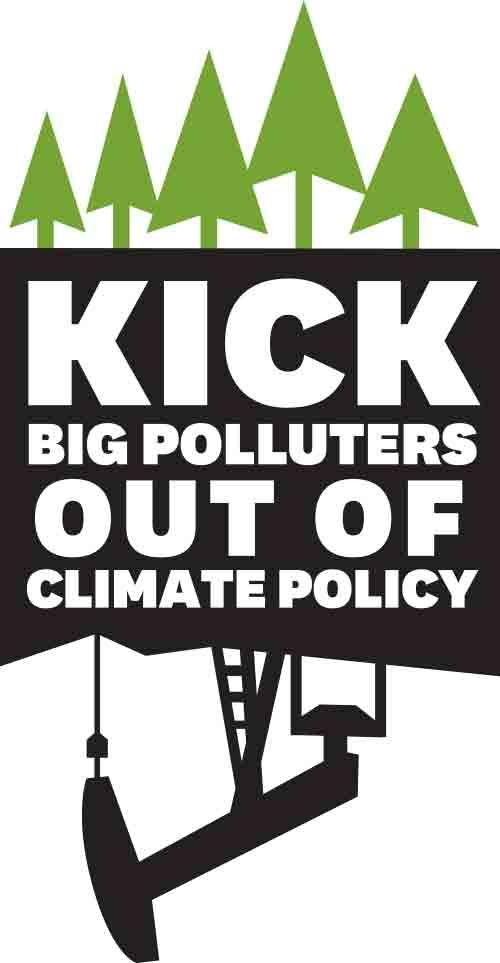

By Jesse Bragg and TJ Faircloth
As the world turns its attention to Paris in advance of the United Nations climate negotiations in December, hundreds of thousands of people are also unifying around a common cause: kicking the very polluters that have caused the climate crisis out of those negotiations.
Sound common-sense? Unfortunately, it is far from the reality. New findings indicate that corporate influence is undermining climate policy progress globally. And here in the U.S., members of Congress are calling for an investigation into ExxonMobil for its misinformation campaigns. Around the world, people are exposing Big Oil’s true intention to talk the talk, but never walk the walk, on climate change.
Corporate co-optation of U.N. climate negotiations
From direct sponsorship and cooptation of U.N. Framework Convention on Climate Change (UNFCCC) talks to external advisory commissions and initiatives, fossil fuel industry interference in policymaking is an obstacle at every level. Just last week, the Oil and Gas Climate Initiative — an alliance between some of the world’s largest oil and gas producers — released a pro-natural gas report advocating for industry friendly, “market-based” solutions. And just weeks ago, Shell and BHP Billiton announced a partnership with McKinsey Consulting to “advise” governments on climate policy.
Inside the UNFCCC, big polluters like the fossil fuel industry and energy utilities are using the convention to greenwash their brands and legitimize their role in climate policymaking. In May, it was revealed that the next Conference of the Parties (COP 21) would be yet another “Corporate COP,” with the announcement of a host of sponsors including corporations such as Engie, Électricité de France S.A. (EDF) and Suez Environnement. Suez Environnement, infamous for its dealings in water privatization, is partially owned by Engie, which profits from fracking operations, putting it at direct odds with the advancement of the treaty. EDF and Engie’s current coal operations account for the equivalent of nearly half of France’s entire emissions.
To make matters worse, industry involvement in the policymaking process is not only allowed, but also encouraged, regardless of a corporation’s environmental track record. The Lima-Paris Action Agenda (LPAA) involves over 1,100 corporations including major fossil fuel corporations, transportation corporations and energy utilities. Such an initiative not only allows some of the world’s biggest polluters to greenwash their images, and it gives them access and leverage in the treaty process.
The fossil fuel industry’s cooptation, appropriation and PR posturing are the same used by Big Tobacco to position itself on the side of health and stave off tobacco control action. In that parallel we find a powerful public policy precedent: the World Health Organization’s Framework Convention on Tobacco Control (FCTC), which came into force in 2005, insulates tobacco policymaking from the tobacco industry itself, recognizing the inherent conflict of interest in allowing Big Tobacco to have a seat at the negotiating table. Join more than 350,000 people who are demanding: Kick Big Polluters Out
The good news? Hundreds of thousands of people around the world — from Kenya to Columbia, Uganda to Sri Lanka — are mounting a historic campaign to jettison polluters from climate policymaking. They are demanding action from governments, now. The campaign and new global platform, called Kick Big Polluters Out, launched just as delegates wrap up the final rounds of U.N. negotiations before the Paris meetings in December.
Join the more than 350,000 people who have already called on their governments to take action to protect climate policymaking — and the planet — from the fossil fuel industry. To join the rapidly growing call and view the new campaign platform, go to: www.KickBigPollutersOut.org
Jesse Bragg is the media director of Corporate Accountability International, a member-powered organization with a 38-year track record of challenging corporate abuse. In concert with allies around the world, Corporate Accountability International coordinates the global initiative to kick big polluters out of climate policy.
Macy's Makes a Turn-Around on Flame Retardants

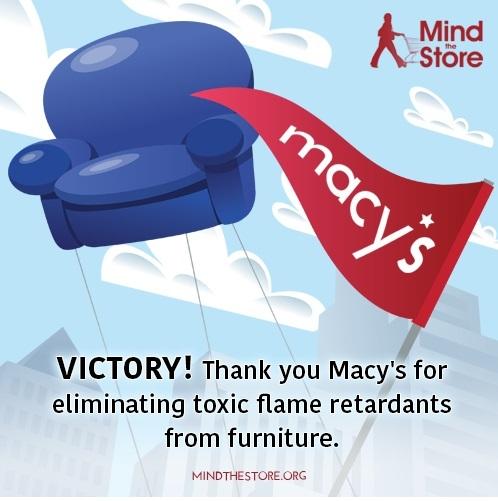
By Judy Levin
Just a couple of months ago, I wrote in this space about shopping for safer furniture made without toxic flame retardant chemicals. For decades, virtually all upholstered furniture was made with these chemicals, but in the past few years advocacy work by health, environmental and consumer groups across the country exposed the fallacies of flame retardants and uncovered the science demonstrating that these chemicals don’t protect us in fires, but can cause cancer and other serious health problems.
When I last wrote about furniture shopping, I outlined the unscientific survey of the San Francisco Bay Area locations of three national retailers I visited to see how the companies were adapting to new California rules that call for labeling. At the time, Macy’s seemed to be far behind the market in making the change to safer furniture. In the visit to one Macy’s furniture store, I could not find a single item made without toxic flame retardants.
Our organization’s surveys earlier this year of major national furniture retailers have found dozens, including Ikea, Ashley and many others, that have committed to selling furniture made without toxic flame retardants. But while some companies took the lead, we heard no such commitment from Macy’s.
With the rest of the market moving rapidly to protect our children’s and families’ health, we believed that consumers deserved to know about Macy’s furniture. We joined with the national Safer Chemicals, Healthy Families coalition’s Mind the Store campaign in planning to expose Macy’s with national demonstrations outside of its stores on Oct. 21.
But the demonstrations were replaced with a victory celebration. On Oct. 20, Macy’s told the campaign that it would immediately tell its furniture suppliers that it will only carry products made without toxic flame retardants.
There are three important takeaways from Macy’s commitment to safer products: First, it’s clear that the end is near for the use of flame retardants not only in furniture, but also in many other applications where the dangerous chemicals simply aren’t needed.
Second, Macy’s response indicated that, even though labeling on the use of flame retardants is required only in California, the company told our campaign that its products will be labeled nationwide. This is especially important to understand in the context of the current debate in Congress over proposed reforms to our nation’s broken system on protections from toxic chemicals.
Proponents in Congress of current proposals for a weak federal rule say that we need a single national standard to protect all Americans from toxic chemicals because state rules only protect the people in those states lucky enough to have stronger rules.
But this specious argument exposes a misunderstanding of how business works. Macy’s is going to label its products nationally, even without a national regulation requiring labeling, because it is simply too complicated to make different products for markets in different states. In response to strong state rules, companies don’t typically produce a safer product just for that state while selling unsafe products in other states. Instead, strong protections from a single state most often lead to market protections for all Americans.
Finally, the Macy’s announcement shows that pressure works. Everyone who works for safer products for children and families should know that our voices are being heard, and major corporations are responding. Take a moment to celebrate, and join us in the ongoing fight for safer, healthier environments for all Americans.
Judy Levin is the Flame Retardant Campaign Director at the Center for Environmental Health.
More Innovation is Needed in Sustainability Reporting: Consider '4-D'


By Caterina Camerani
The business world is filled with efforts to enhance sustainability, measure sustainability and spread the mantra of sustainability.
Sustainable Brands’ recent New Metrics ’15 conference in Boston included a plethora of experts from around the world lauding new methods to measure environmental, social and governance (ESG) impacts of their companies. The innovation represented was at once encouraging and discouraging.
There is no doubt that adopting sustainability requires a complete shift in energy use, material use and daily behavior. The corporate world has far to go before we can achieve a sustainable society where carbon footprints are minimized and efficiencies and profits are enhanced.
How are we going to get from where we are today to where we need to be?
The question is overwhelming and hugely significant. Sustainability is not about reporting, but reporting is the basis for real actions leading to change.
The New Metrics ’15 conference featured a number of promising experiences from companies around the globe.
It was clear that one of the most difficult puzzles facing corporations is determining the sustainability of their value chain. To do so requires standardized measurements and capabilities, resources, and availability of good data.
These elements are not universally available in the corporate world, and yet, they are invaluable to advance the ongoing shift toward combined reporting that incorporates economics and sustainability.
At the conference, I had the opportunity to share AkzoNobel’s experience with a process we created called 4-D reporting, which measures impacts as they relate to environment, people, society and financial capital at large. It was clear that the approach would be difficult for some to emulate.
Although larger corporations have been measuring their environmental impacts for many years, the real complications arise when they seek to measure – and improve upon – their social and human capital impacts and costs. To do so requires a methodology for monetizing human and social capital, along the entire value chain.
The biggest challenge then to determining true sustainability of a value chain is to accumulate high-quality information along the chain, measuring all four elements from suppliers to customers.
AkzoNobel was able to accomplish these measurements during a pilot program involving six plants in Brazil. The work wasn’t easy. The effort took Klas Hallberg, manager of new developments in sustainability and 4-D profit and loss project manager, over a year to develop the methodology, working with external partners such as True Price and GIST, which helped validate the process.
We found great value in what we learned. A study like this makes everything more transparent and creates a new sense of urgency – and it helped advance AkzoNobel’s ongoing commitment to sustainability. The results are now used to stimulate innovation in the right direction for our ongoing efforts to do more with less in a value chain perspective, which we call Planet Possible.
I said that what I learned at New Metrics ’15 was both encouraging and discouraging. Yes, we have far to go in what should be our collaborative goal toward a sustainable world. But the interest in 4-D reporting, and the energizing conversations among experts and corporate executives from around the world, is exciting. Companies have started to show that future reporting will be about far more than various measures of profit. Combined reporting is being used for improving the quality of strategic decision-making.
And that is an encouraging thought.
Image credit: Pixabay
Caterina Camerani is the sustainability manager for Pulp and Performance Chemicals at AkzoNobel. She works to ensure the business’ efforts enhance performance and support the long-term interests of AkzoNobel globally. She has been with AkzoNobel for 12 years. Camerani has been a guest lecturer on sustainable development, innovative sustainable solutions, sustainability reporting, “Zero Waste,” biodiversity and ecosystem services. She has a Doctor of Philosophy in Inorganic Environmental Chemistry from Chalmers University of Technology, in Gothenburg, Sweden.
3p Weekend: 8 Craziest Water Bottle Concepts on Kickstarter Right Now


With a busy week behind you and the weekend within reach, there’s no shame in taking things a bit easy on Friday afternoon. With this in mind, every Friday TriplePundit will give you a fun, easy read on a topic you care about. So, take a break from those endless email threads and spend five minutes catching up on the latest trends in sustainability and business.
We all know how important it is to stay hydrated: It keeps us alert, increases productivity, and alleviates common aliments like headaches and muscle soreness.
But a recent lawsuit against Nestlé, alleging the company continued to siphon water from California forests despite an expired special-use permit and a severe drought, reminds us how important it is to consider the way we get our daily water fix.
Bottled water comes with a hefty set of environmental impacts beyond the obvious plastic waste, which estimates peg at around 60 million bottles a day in the U.S. alone. The water must, of course, be extracted, and as the Nestlé case shows, this may happen in areas where water is scarce. Add in the manufacture of plastic packaging, and it takes 1.39 liters of water to create a one-liter bottle of the stuff.
For a creative solution to our nation's bottled water problem, we turned to that ever-bubbling hot-spring of innovation, Kickstarter. The ideas may seem silly to some (why reinvent the water bottle, anyway?). But if it gets more people to switch from pre-packaged water to a reusable water bottle, we're all for it. Read on for eight ideas that made us look twice.
1. The Aquabook
Who knows why so many of us forget our reusable water bottles at home. David Ziegler and Felix Durst, creators of the Aquabook concept on Kickstarter, are hoping it's the awkward shape and size of our bottles that make them inconvenient or easily forgettable.
For this problem, they've dreamed up an innovative solution: a water bottle with the look and feel of a book or tablet. Despite its slim design, the BPA-free bottle can hold 25 ounces of water for easy hydration on-the-go.
And, in true Kickstarter water-bottle fashion, this unique idea doesn't skimp on style. Choose from five bottle and cap colors to customize your Aquabook, and add a photo or a favorite quote to make it your own. (Yes, it's a bit like those trapper-keepers from your pre-teen years, but that's kind of what we like about it.)
Snag one on Kickstarter for $23 here.
2. The HopFuse
Love flavored water but hate the disposable packaging? Recreate your favorite flavor -- from simple citrus to exotic ginger -- using a water infuser, and get all the taste without the waste.
This Kickstarter innovation, the HopFuse, will help you do just that. Simply unscrew the bottom lid, put your fruits, veggies and herbs into the infuser, pour in your water, and infuse away!
As an added bonus, which you may have guessed from the name, the HopFuse can flavor more than water. Designed to help you turn that dirt-cheap beer into a craft-brewed concoction, the bottle lets you personalize your beer experience -- ensuring you'll never sip on boring suds again. It comes with four flavor blends -- Belgian, IPA, pale ale and stout -- to get you started. Not one for beer? It'll infuse your favorite tea, too!
Snag one on Kickstarter for $27 here.
3. The Hydaway
Is a book-sized bottle still too big for you? We have just the ticket: the Hydaway, a recently funded Kickstarter project now in its pre-order phase.
Thanks to a beautifully simple design, the 21-ounce Hydaway packs down small enough to fit in your pocket. Its pint-size makes it perfect for campers and trekkers -- not to mention lazy people who just can't today (seriously, stash one in your purse or desk and thank yourself later).
4. The Pint
https://d2pq0u4uni88oo.cloudfront.net/projects/2003081/video-594452-h264_high.mp4
Maybe it's because it's Friday, but we're loving these water bottle innovations that can take you from the gym straight to happy hour.
This sleek, insulated canteen is perfect for those weekend treks to your favorite campground -- but it's hiding a secret: It converts easily into a cup for hot coffee or cold beer once you arrive at your destination.
"One of the beauties of camping is that you pack only the essentials," creator Stable Goods Co. wrote on its Kickstarter page. "Many people still pack a bottle and a separate cup for coffee or beer. The Pint is designed to be used with all your beverages." All-day hydration and all-night fun in one neat little package ... where do we sign up?
Snag one on Kickstarter for $26 here.
5. The GR Bottle
https://d2pq0u4uni88oo.cloudfront.net/projects/2055724/video-593593-h264_high.mp4 Foam rolling has been documented as a great way for athletes to relieve soreness, hit hard-to-reach trigger points to loosen muscles, and relieve excess stress on joints.
This self-massage technique can help loosen tired muscles and keep them ready for rigorous training. But foam rolling equipment can be bulky, and athletes on the go may be tempted to sacrifice this wellness tactic for a bit of extra space in their gym bags.
Enter the GR Bottle: a water bottle with a foam roller built in. It was created for athletes, by an athlete (U.S. Olympic bobsled and skeleton team member Austin McCrary, to be precise). The bottle is designed to fit perfectly in your hand to make rolling easy, and the wide mouth also gives it the unique ability to be emptied out and used as a storage container for travel. It's like a hydration station, a personal trainer and a travel buddy rolled into one.
Snag one on Kickstarter for $50 here.
6. The DYLN
https://youtu.be/AGN5ncatnuI
By now you've probably heard of the alkaline water craze. If not, here's a quick synopsis: Because alkaline water has a higher pH than regular tap water, the theory is that it can make our bodies less acidic, thereby alleviating hormone and metabolic problems associated with high acidity in the bloodstream. Some even say it can reduce bone loss and lengthen our lifespans.
Medical professionals insist more research is needed to determine the true benefits of alkaline water (if any). But alternative medical proponents are all about it, and many in the wider wellness community think something along the lines of, "Why not? Doesn't sound like a bad idea."
If you're itching to give alkaline water a try, DYLN, a recently funded Kickstarter concept dubbed "the living water bottle," is an easy way to do it. Designed to replace alkaline waters sold in single-serving bottles, the DYLN raises the pH of regular tap water using a mineral bead diffuser.
7. The Welly
https://youtu.be/0gQKEDa2dLc
One of the most important steps on a path away from pre-packaged bottled water is the understanding that tap water is perfectly safe to drink. But even those lucky enough to live in countries where this is almost always true may want to filter their water further. Some want to remove chlorine and other particulates for health reasons, while others just want to make the water taste better.
Caraffe-style water filters are big sellers, but they won't help you if you're on the go. And water-filter bottles designed for camping can be cumbersome ... not to mention unattractive if, you know, the aesthetics of your water bottle is something of interest to you.
Enter the Welly: A stylish, on-the-go bottle that removes chlorine and particulates, as well as that overall funky smell and taste, using activated coconut shell carbon. As an added bonus, Welly will donate $1 to charity: water for every bottle sold.
8. The Trago
To go with your smartphone, smart watch and kitchen-full of smart appliances comes the first smart water bottle. At first glance, this would seem like yet another item no one asked for. But it turns out a whole boat-load of people asked for it -- 895 backers pledging $75,277 to be exact.
Recently funded on Kickstarter and now in its pre-order phase, Trago is a cap that fits on all wide-mouth water bottles (at least that's what the company claims, but it comes with its own bottle too). It connects to the user's phone, wearable devices and health platforms, and uses smart data like body type, weather and activity level to help determine his or her optimal level of hydration.
It measures how much you drink, and keeps you on track to meet your daily goals via your smartphone. Like many tech concepts, it bridges the divide -- pleasing wellness enthusiasts curious about their optimal water intake, as well as those of us who can barely remember the car keys let alone hourly hydration.
Images courtesy of Kickstarter